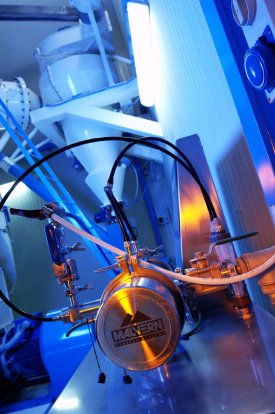Aug 14 2008
Ferrari Granulati (Verona, Italy), a leading supplier of marble granulates and powders, is using a number of different real-time particle size analyzers from the Malvern Instruments range to achieve exceptional product quality at competitive variable cost. With continuous measurement the company has developed automated, innovative processing solutions that minimize energy use. Tight control of particle size produces fine powders tailored to applications in the paper, plastics and building industries.

Micronized calcium carbonate with average particle size in the range 3 – 8 microns is produced in a novel STM vertical roller mill, which has a range of unique features. The product is continuously monitored using an Insitec on-line particle size analyzer from Malvern. This provided essential data for design, commissioning and optimization. The mill is fully automated and extremely responsive, allowing the company to produce to order. There is no waste or re-work and energy consumption is around half that of a conventional ball mill.
“Development of the mill was a major investment for us in terms of both time and money,” remarks Alberto Ferrari, Production Manager, Ferrari Granulati. “We recognized from the start that to truly optimize design and operation we would need continuous particle size measurement, and the Insitec seemed the ideal choice. We particularly liked the fact that it was a robust process instrument rather than a modified lab analyzer. The Insitec is consistently reliable and problem-free and has provided us with the data needed to ensure the success of this project.
A Parsum in-line probe, also supplied by Malvern, is used upstream to control the amount of fines in a coarser, 100 – 400 micron material produced by sieving. An automated control loop varies feed to the sieve stack to keep the level of fines at an acceptable level. This loop maintains product specification during fluctuations in humidity, which have a dramatic impact on process performance. Ferrari Granulati is therefore able to avoid pre-drying the feed, saving between 10 to 15% of the production cost. Automated control also maximises unit throughput. The ability to compensate for the effects of humidity fluctuations has led to a rise in throughput of between 20 and 30% during the most humid winter months.
For more information on particle size analysis, click here.